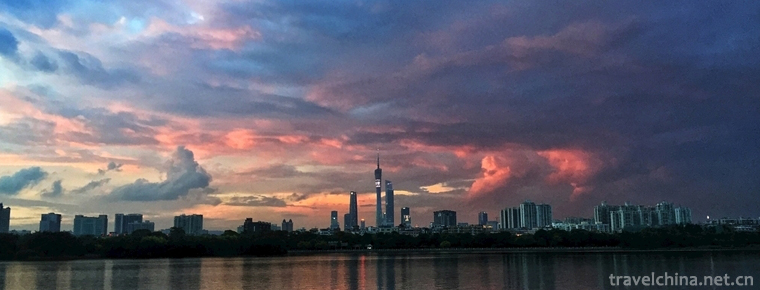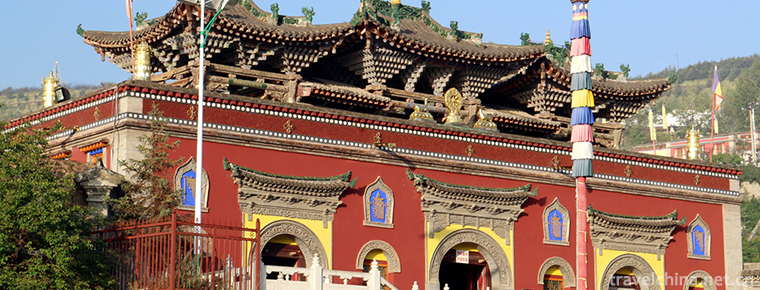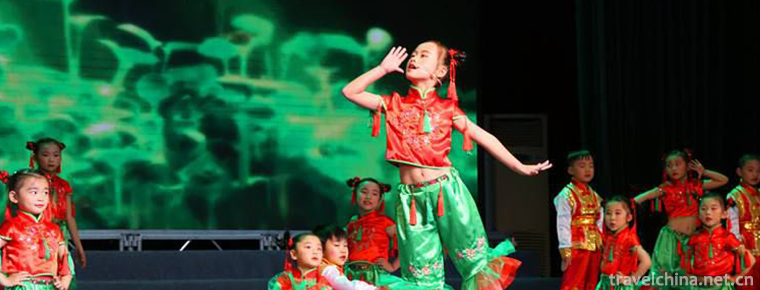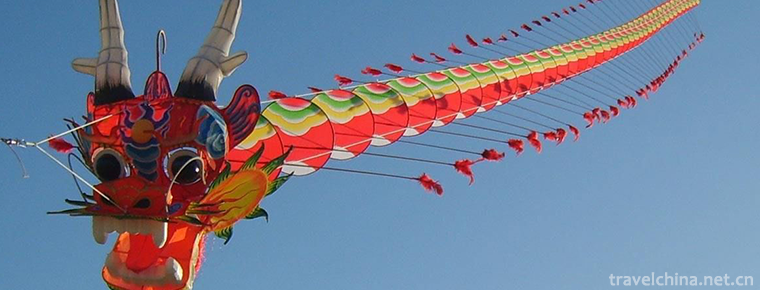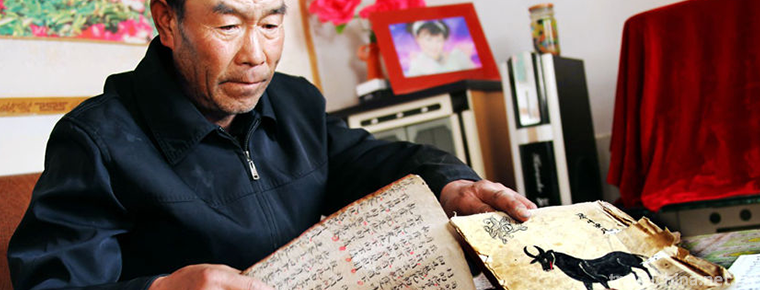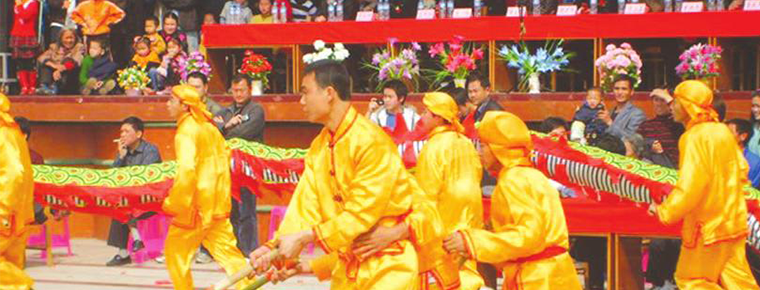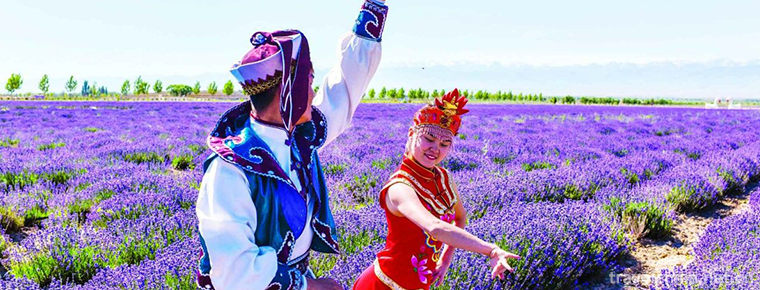Uygur Folk Songs
Uygur Folk Songs
Uygur folk songs are rich in content, which can be divided into two parts: traditional folk songs and new folk songs. Traditional folk songs include love songs, labor songs, historical songs, Life songs and other categories.
On June 7, 2008, Uygur folk songs were listed in the second batch of national intangible cultural heritage list with the approval of the State Council.
historical origin
Uygur folk songs are very rich in content, which can be divided into two parts: traditional folk songs and new folk songs. Folk songs are the reflection of the people's voice. Traditional folk songs include love songs, labor songs, historical songs, Life songs and other categories. But the essence of its spirit is basically "pleasure in pain".
The development of traditional music:
The traditional music of the Uygur nationality inherits the artistic traditions of Guzi music, Gaochangle music, Yizhou music, Shule music, Huihe music and Arabic music in the ancient Western Regions, and retains strong national and regional characteristics.
In the long-term historical development, the Uygur folk music in Xinjiang has melted the milk of local life, forming the different styles of Southern Xinjiang, Eastern Xinjiang and Daolang color areas. Southern Xinjiang has a wide range of color areas with different contents and forms, and Hetian folk songs are simple and short, rich in local flavor; Kashgar folk songs have complex rhythm and rich modes; Kuqa folk songs are lively and lively, with distinct dancability, implicitly revealing the legacy of ancient turtles'music and dancing postures; Eastern Xinjiang color areas include Hami, Turpan and other places, where folk songs are all in terms of structure and mode. There are many similarities with the folk songs of Han and Mongolian nationalities. The folk songs in Daolang color area have rough style and retain the pastoral sentiment favored by the ancient nomadic Daolang people.
In the history of Uygur music, the famous Chinese and foreign large-scale Classical Music Suite Twelve Mukam occupies an important position. It is an artistic treasure of the perfect combination of Uygur national music and dance. It includes more than 340 classical narrative songs, folk narrative poems, dance music and improvisational music, which are spread throughout the northern and southern Xinjiang. Mukam is divided into "Daolang Mukam", "Hami Mukam" and "Ili Mukam" according to different regions. Among them, "Kashgar Mukam" is the largest in scale and the most complete in form and melody. For the development and standardization of this Muqam, Amanisha Khan, the queen of the second generation of Yarkang's monarch Abu Dhurzesikhan in the 16th century, once paid an indelible tribute.
Twelve Mukams was published after the founding of New China. The whole set of Mukam includes more than 170 songs, songs and dances, 72 instrumental interludes, playing continuously for 24 hours, with the national characteristics of music, dance and words. This is a huge and complete musical epic, which almost summarizes the struggling life of the Uygur people for hundreds of years and all their national art forms. The distinctive features of Uygur music are also manifested in the diversity of national musical instruments.
artistic characteristics
folk song
Labor Song
Labor songs mainly include hunting songs, pastoral songs, wheat harvest songs, field songs, ditch songs, spinning ballads, wall songs and so on. Many love songs express the infinite loyalty and ardent pursuit of love of young men and women.
Customary song
The life custom song is closely related to various rituals and national traditional customs. Customary songs are sung in weddings, funerals, celebrations, sacrifices and folk festivals. These folk songs include wedding song, spring song, snow song, funeral song (also known as "elegy"), fasting song and so on. The hypnotic songs popular in Xinjiang (such as "Sleep, Children") are typical short-tuned apprenticeship songs. Xianghe songs can also be divided into two sub-categories. The first type is mainly solo self-play and self-singing, singing lyric and Narrative Folk songs. The second kind of Xianghe song uses a fixed rhythm, regular rhythm, clear rhythm, warm atmosphere, often used for dancing. The main forms of performance are chorus, chorus, lead singing and help singing.
History Song
History song is a song reflecting some important events in the history of Uygur people. Some praise peasant uprisings, such as The Song of the Hero Shadir, The Song of the Caravan Man, The Song of the Timur Haili School, and others expose the ugly features of imperialist aggressors, such as the song of Agube whipping and the song of forced relocation. Historic songs are mainly about some important events in Uygur history. Some reflect the cruel oppression of the feudal ruling class and the heroic rebellion and uprising of peasants. Some reflect the heroic deeds of Uygur people in resisting foreign aggression, defending their homeland, defending the frontier and safeguarding the reunification of the motherland. Among them, Nozigum, Song of City Building and Song of Hero Shadir are widely circulated in Yili area of Northern Xinjiang.
love sings
Love songs occupy a large proportion in Uygur folk songs. The fervent love between young men and women is often expressed by the way of comparison which is rich in Uygur national psychological characteristics and regional characteristics. Therefore, it has a unique artistic charm.
New Folk Songs
The new folk song is a warm eulogy of the Uygur people to the new life of socialism, which shows the people's great love for the Party, leaders and the socialist system.
Uygur folk songs have a wide range of contents and a large number. Most of the lyrics of folk songs are not fixed. They often choose ballads that can apply the tune of songs. The linings are short and long. They play an important role in strengthening the tone, rendering the atmosphere, deepening the meaning of words. The lyrics mostly use the techniques of comparison and Xing, which have profound implications.
Muqam
Mukam is the classical music of Uygur nationality, which contains instrumental music, vocal music, dance and other components. Uygur Mukam can be roughly divided
There are five kinds: the first is twelve Mukams popular in Kashgar, Kuqa, Aksu and Shache; the second is Hami Mukam popular in Hami and Yiwu; the third is Mukam popular in Turpan; the fourth is Ili Mukam; the fifth is Daolang Mukam. Except for 9 sets of Muqam in Turpan, the rest are 12 sets, totaling 57 sets.
The structure of the popular Mukam is not the same everywhere. The most complete and huge one is the twelve Mukam. Twelve Mukams consist of more than 170 songs and 70 instrumental music. It takes more than 20 hours to play them once. Each set consists of three components: "Poor Nakman", "Dastan" and "Masilep". Each part consists of several different paragraphs. "Poor Nakman" means "Daqu", which begins with a deep emotional prelude to a slate, followed by "Taizi", through passages such as "Nursh", "Selek", "Jura" and so on, until the exciting "Seinem" (unlike the singing and dancing "Seinem") and "Grand Selek" reach their climax, and finally ends with a light "Taikat". "Dastan" is composed of three to five narrative songs with different rhythms and speeds. There are interludes between each narrative song. Uygur is called "Majegur". "Messilep" is the name of an ancient poet. His poems are easy to understand and are well known to women and children, so they are often sung in folk tunes and accompanied by dance. Over time, the poet's name became the name of this part of Mukam. In 1983, the Mukam Art Troupe was set up in Xinjiang Uygur Autonomous Region, and Mukam's research work was on the right track.
Major instruments
String instruments: plucked pole, Gervap, Dual, Karon.
String instruments: Satar, Czech Republic, Husitar.
Playing instruments: flute, balaman, suona.
Percussion instruments: drums, Nagra, Sabayi, other stones.
Uygur musical instruments are very developed and have a long historical tradition. Uygur musical instruments are elaborately made. According to their structure and playing methods, there are dozens of kinds of musical instruments, such as playing, stringing, plucking and percussion.
There are flute, suona, Karnay (trumpet), Ballaman and so on, which are widely used and have a long history.
The stringed instruments include Sattar, Czech Republic and so on. Sattar was created in the 10th to 12th centuries on the basis of the old Turkic instruments Kubuz and Duolongev. It is a special instrument for singing the classical music Twelve Muqam. Aiczech is the main instrument of Uygur traditional band accompaniment and ensemble.
The plucked instruments include Dutar, Jewafu, Boer, Karon and Yangqin, which are popular instruments for Uygur people of all ages. Dutar is equipped with two strings. It is popular among Uygurs. It is widely used in families as backup, mostly for self-playing and self-singing. Rewafu is also one of the most popular instruments among Uygurs. It is more common in southern Xinjiang. It often accompanies singing and dancing with other instruments, and is also used as solo and ensemble. Kashgar's Jewafu body, pole and head are beastly and rich in national patterns inlaid with animal bones. It is not only a national musical instrument, but also a delicate handicraft. Tanbu is a musical instrument with distinct national style, loud and beautiful voice, and often plays solo and accompaniment. Kalong is also one of the ancient Uygur musical instruments, mostly used in playing Mukam, playing a leading role.
Percussion instruments include Dafu (drum), Nagra (drum), Sabay and Chahchak (stone). Dafu is one of the ancient Uygur musical instruments, which is widely distributed in the north and south of Tianshan Mountains. It is an indispensable percussion instrument in Orchestra Ensemble and singing and dancing. Nagra is used for Orchestra ensemble, with a huge volume and a long transmission. Sabayi and Chahchak are the instruments by which they touch and produce sounds. Sabayi is mostly accompanied by the singing of "Messilev" among the people. In addition, Sabayi is also Buxie, which is used as one of the instruments for patients to "exorcise evil spirits" and cure diseases. Chahchak can play a variety of rhythms, which can enrich the performance color of the band.
Representative Works
The well-known Uygur folk songs at home and abroad include Alma Khan, Climbing Up Half Moon, Dabancheng and Sending Me a Rose.
Inheritance Significance
Uygur pop music has developed rapidly in recent years because of its broad popular base, long tradition, unique feelings and enthusiasm in music. Uygur pop music inherits some elements of Uygur traditional music, but it also makes bold innovations and reforms. With the emergence of electronic music and modern instruments, Uygur pop music has more choice space, such as the attempt of Spanish Flamenco style.
Representatives: Escale, Uygur, "Grey Wolf" (the first folk-style band in Xinjiang in the early 1990s), the lead singer of the band. While inheriting and developing Uygur national music, Escale integrated many modern music concepts. His songs are well-known and accepted by many young people. He has released many albums and become a representative of a style of original music in Xinjiang.

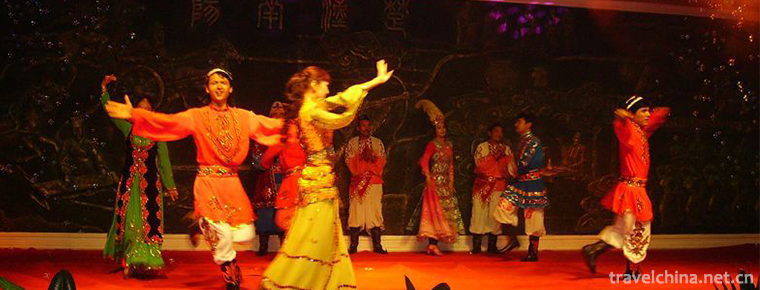
-
Canton Tower
Located in Guangzhou Haizhu District (Yizhou Island) near the Chigang Tower,.
Views: 161 Time 2018-10-12 -
Taer Temple Scenic Area Xining City
Tar Temple, also known as Tar Temple, was founded in the 10th year of Hongwu Ming Dynasty (1377). Named after the Great Silver Pagoda built in memory of Zongkaba, the founder of the Yellow Religion.
Views: 125 Time 2018-12-12 -
Niangziguan Scenic Area
Niangziguan is a famous pass of the Great Wall of China, known as the Ninth Pass of the Great Wall of China, and it is a must for military strategists of all dynasties..
Views: 224 Time 2019-02-07 -
Shui Dong gou
The Shuidonggou scenic spot in Ningxia is the earliest Paleolithic cultural site excavated in China. It is known as the birthplace of Chinese Prehistoric Archaeology.
Views: 145 Time 2019-02-08 -
Dang Tu folk songs
Dangtu Folk Song is one of the national intangible cultural heritages of the local traditional music in Ma'anshan City, Anhui Province..
Views: 242 Time 2019-04-25 -
Kite making skills
Kite making skills, Weifang City of Shandong Province, Nantong City of Jiangsu Province, Lhasa City of Tibet Autonomous Region, Beijing, Tianjin and other local traditional skills, one of the national.
Views: 120 Time 2019-04-29 -
Hexi treasure roll
Hexi Baojuan, a traditional folk literature in Liangzhou District of Wuwei City and Suzhou District of Jiuquan City, Gansu Province, is one of the national intangible cultural heritages..
Views: 120 Time 2019-05-03 -
Lion Lamp in Jinggangshan Hall
"Quantang Lion Lantern" is a traditional Wushu athletic project spread in Huzhaoping Village, Shangxiang, Jinggang, Shandong Province. It has nearly 200 years history. .
Views: 152 Time 2019-05-08 -
Sibo Belem Dance
"Bailun" dance is the generic name of Xibo self-entertainment dance and the first type of Xibo folk dance. It originated from an ancient dance that imitated life and production posture in th.
Views: 129 Time 2019-07-01 -
String Dance
String dance is popular in Sichuan, Yunnan and other Tibetan areas and in Changdu, Tibet. String dance is an indispensable self-musical dance in Tibetan people's life. During festivals, weddings and g.
Views: 944 Time 2019-07-03 -
The changing style of Cheongsam
After a hundred years of evolution, with the change of people's life style and aesthetic taste, cheongsam has developed a variety of styles, which makes people dazzled. In the golden age of the development of Cheongsam in the 1930s and 1940s, the styles of cheongsam changed .
Views: 310 Time 2020-12-11 -
Honorary title of Mianyang
National system to promote comprehensive innovation reform pilot area.
Views: 332 Time 2020-12-14
